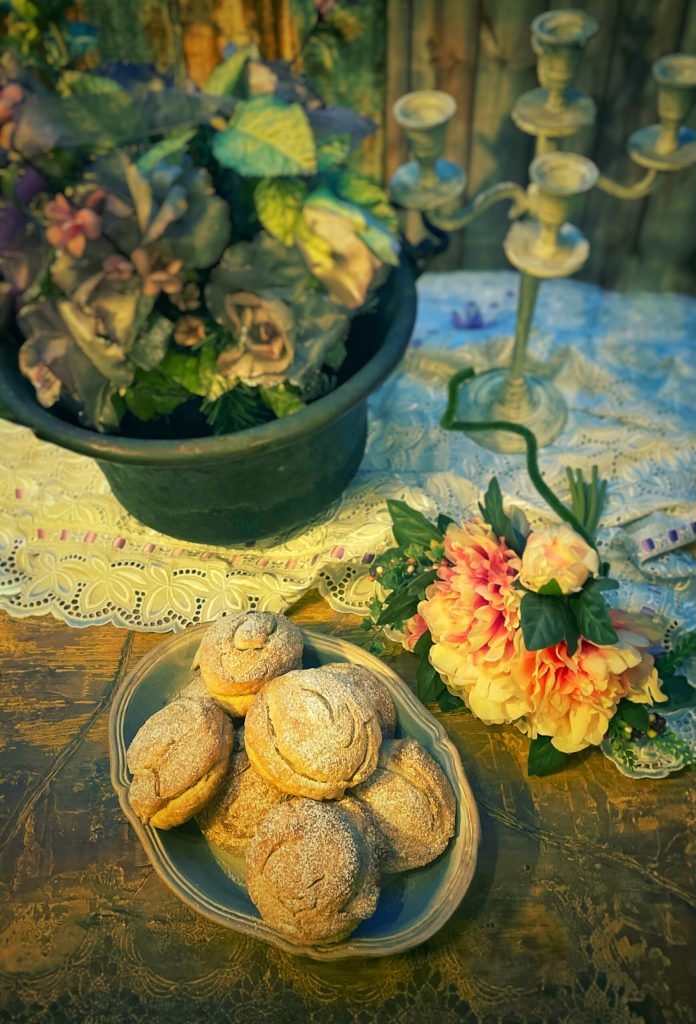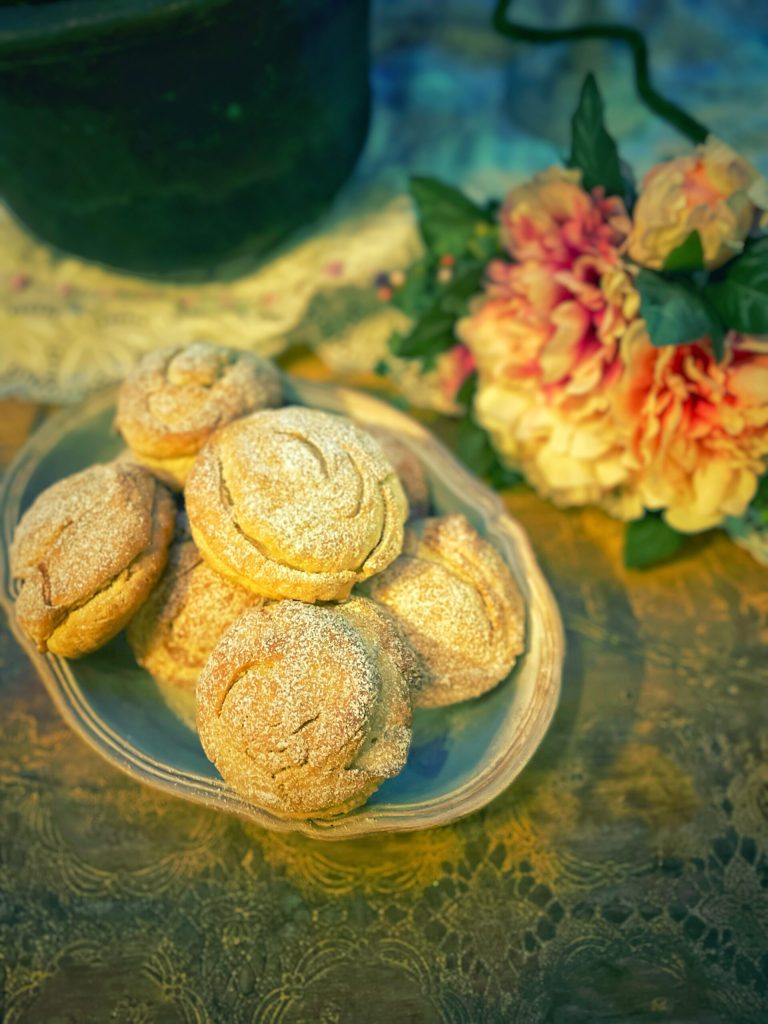The Mexican spiral brides are soft and aromatic sweet bread, typical of the artisanal bakery of Jalisco and other regions of Mexico, made with flour, milk, and butter.
Their spiral shape resembles the ruffles of a wedding dress, which is how they got their name.
There are two regional variations of Mexican brides.
Round and fluffy shape: common in northern Mexico and traditional bakeries, often with powdered sugar on top.
Rolled spiral shape: mainly found in the state of Jalisco and some central-southern bakeries, with a similar dough but rolled, almost like a pinwheel.
Both are called Brides, but the shape may vary depending on the region and bakery.
Pan dulce, which literally means “sweet bread,” is the generic name for a variety of Mexican sweets like the brides and:

- Difficulty: Medium
- Cost: Economical
- Rest time: 3 Hours 40 Minutes
- Preparation time: 20 Minutes
- Cooking methods: Oven, Electric oven
- Cuisine: Mexican
- Seasonality: All seasons
Ingredients
- 3/4 cup flour
- 2 tbsp sugar
- 1/4 cup water
- 1 egg
- 1 3/4 tsp active dry yeast (or 220 g of sourdough starter)
- 4 3/4 cups flour
- 3/4 cup sugar
- 1 tsp salt
- 1 tbsp vanilla extract
- 3/8 cup milk (lukewarm)
- 1/2 cup butter (soft + for brushing)
- as needed powdered sugar (or granulated – for garnishing)
Steps
Mix all the pre-ferment ingredients, cover, and let rest for at least 30 minutes until bubbles form.
Prepare the dough: In a large bowl, mix flour with sugar, salt, and vanilla. Add lukewarm milk and the yolks, mixing well. Incorporate the butter cut into pieces and continue to mix until a smooth dough is formed.
Add the preferment: Combine the preferment with the dough and knead for 15-20 minutes until a smooth and elastic mass is obtained. If the dough is too sticky, add a little flour, but do not overdo it.
First rise: Form a ball with the dough, cover with a damp cloth, and let rise in a warm place for 1-2 hours or until doubled in volume.
Form the Brides: divide the dough in half. With one part, create portions of about 60 g (2 oz) and form balls. With the other half, roll out a rectangle (if you wish, you can brush with butter), roll on itself, and cut into pieces. Flatten and overlap onto the balls, pressing them slightly.
Second rise: Place the Brides on a baking sheet lined with parchment paper, leaving space between them. Cover and let rise for about 1 hour or until doubled in volume.
Baking: Preheat the oven to 355°F. Bake the Brides for 20-25 minutes, or until golden on the surface.
Finishing: Remove from the oven and immediately brush with melted butter. Sprinkle with granulated or powdered sugar as desired.
Mexican Pan Dulce
The creative contribution of French bakery products to Mexican cuisine reached its peak at the beginning of the 20th century, during the dictatorship of Porfirio Díaz.
Skilled Mexican bakers adopted French techniques to create new types of bread with lively names.
Today it is estimated that between 500 and 2,000 types of bread are produced in Mexico.
Today it is estimated that between 500 and 2,000 types of bread are produced in Mexico.
Mexican pan dulce is usually consumed at breakfast or dinner. It is typically accompanied by hot chocolate, milk (often warm), or coffee, and is dipped into the beverage to enhance its flavor.
Mexican pan dulce is usually consumed at breakfast or dinner. It is typically accompanied by hot chocolate, milk (often warm), or coffee, and is dipped into the beverage to enhance its flavor.
Other Latin American countries and even Europe have adapted some Mexican sweets, but it is in Mexico that new creative forms originated.
Today, pan dulce is present in many parts of the United States, especially in places like California, Arizona, and Texas, as a result of migrations.
FAQ (Frequently Asked Questions)
What is the difference between Novias and Conchas?
The main difference between Novias and Conchas lies in shape, topping texture, and decoration method, while both are beloved sweet breads in Mexico.
Here is a clear comparison:
Shape:
Novias: often have a spiral shape, inspired by the ruffles of a wedding dress (hence the name). They may also have a smooth base and simpler decoration.
Conchas: are round and characterized by a shell-like topping (hence the name), made with sweet dough decorated by hand with lines resembling a shell.
Topping:
Novias: do not always have a crunchy topping, but are often brushed with melted butter and sprinkled with sugar immediately after baking.
Conchas: have a crumbly sweet crust on top of the dough, made with butter, sugar, and flour, flavored (vanilla, cocoa, etc.), which dries out and forms a cracked crust when baked.
Dough:
Very similar: both are brioche-style breads enriched with butter, eggs, and sugar. However, conchas tend to be lighter and airier, while novias can be denser and richer.
Origin and symbolism:
Conchas: widespread all over Mexico, considered among the most representative pan dulce.
Novias: more local (e.g., Jalisco, Guanajuato), the name recalls the idea of “bridal bread,” often linked to family or romantic occasions.

